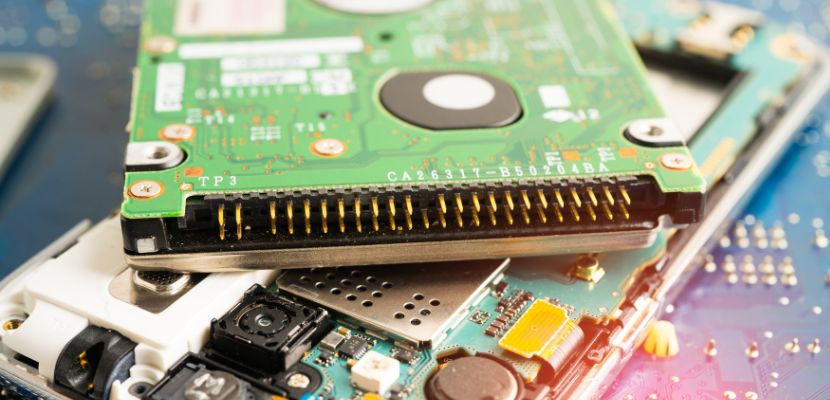Memory allocation is the process by which computer programs reserve portions of system memory (RAM) to store data and execute instructions.

What Is Meant by Memory Allocation?
Memory allocation refers to the method by which a computer system assigns blocks of memory to programs and processes for storing data and variables during execution. This process can occur at both compile time and runtime, depending on whether the memory requirements are known in advance or determined dynamically as the program runs.
Allocation involves reserving specific areas of physical or virtual memory and tracking their usage to prevent conflicts or leaks. The system's memory manager or allocator is responsible for managing free and used memory blocks, handling requests for memory, and reclaiming memory that is no longer in use.
Efficient memory allocation is essential for maintaining system performance, preventing crashes, and optimizing the use of limited memory resources.
Memory Allocation in Programming Languages
Memory allocation varies across programming languages based on their level of abstraction, runtime environment, and memory management models. Here's how it's typically handled in several major languages.
C and C++
These languages give programmers direct control over memory allocation. In C, memory is allocated statically (at compile time), automatically (on the stack), or dynamically (on the heap using functions like malloc() and free()).
C++ builds on this with operators like new and delete. The programmer is responsible for explicitly freeing allocated memory, which can lead to memory leaks or undefined behavior if mismanaged.
Java
Java abstracts memory management through automatic garbage collection. Memory is allocated on the heap using the new keyword. The Java Virtual Machine (JVM) monitors memory usage and reclaims memory that is no longer referenced. Developers do not manually deallocate memory, which reduces the risk of leaks but can introduce pauses during garbage collection cycles.
Python
Python uses dynamic typing and automatic memory management through reference counting and a cyclic garbage collector. Memory allocation is handled internally by the Python memory manager. Although the del keyword can be used to delete references, actual memory release is determined by the garbage collector, making memory handling largely transparent to the programmer.
Rust
Rust takes a unique approach with its ownership model, enforcing memory safety at compile time without a garbage collector. Memory is allocated using constructs like Box, Vec, or directly on the stack, and it is automatically released when it goes out of scope. This model ensures no memory leaks or race conditions, while still offering performance close to C/C++.
Go
Go also features automatic memory management with garbage collection. Developers allocate memory using new or make, and the Go runtime handles cleanup. While this eases development and reduces bugs, developers can still influence allocation behavior through optimizations like object pooling.
JavaScript
In JavaScript, all memory allocation is managed automatically. Variables, objects, and functions are stored in heap memory, and the JavaScript engine uses a garbage collector to reclaim memory when objects are no longer reachable. Developers do not interact with memory allocation directly, although efficient coding patterns can help reduce memory pressure.
Memory Allocation in Operating Systems

Memory allocation varies across operating systems based on their design, resource management strategies, and support for multitasking and virtual memory. Each OS implements distinct mechanisms for allocating, managing, and protecting memory for processes.
In Windows, memory allocation is managed through a combination of physical memory and virtual memory. The Windows Memory Manager handles allocation using structures like page tables, working sets, and paging files. It supports features such as demand paging, memory-mapped files, and the VirtualAlloc API for dynamic memory allocation. Each process runs in its own virtual address space, ensuring isolation and protection from other processes.
In Linux, memory allocation is managed by the kernel using a virtual memory system that maps virtual addresses to physical memory. It employs strategies like paging and swapping, along with allocators such as malloc in user space and the slab allocator in kernel space. Linux uses system calls like brk, mmap, and sbrk to allocate and release memory. Memory overcommitment and copy-on-write are key performance techniques, especially in process forking and shared libraries.
In macOS, memory management is built on the XNU kernel, combining components from BSD and Mach. macOS uses a virtual memory system with protected address spaces and demand paging. It allocates memory through APIs like malloc and vm_allocate, and integrates memory compression to manage inactive pages efficiently. Applications are sandboxed with strict memory boundaries, and the system emphasizes user responsiveness through intelligent memory reuse and app suspension.
In embedded or real-time operating systems (RTOS) like FreeRTOS or VxWorks, memory allocation is typically more constrained and deterministic. These systems often avoid dynamic memory allocation due to fragmentation and unpredictability, relying instead on static allocation or custom memory pools. When dynamic allocation is used, it must be carefully managed to meet real-time deadlines and avoid memory leaks.
Memory Allocation in Cloud Computing and Virtualization
In cloud computing and virtualization, memory allocation is abstracted and managed by a hypervisor or cloud orchestration platform to optimize resource usage across multiple virtual machines (VMs) or containers running on shared physical hardware.
The hypervisor allocates virtual memory to each VM, translating it into physical memory through techniques like memory ballooning, overcommitment, and page sharing, allowing multiple instances to run efficiently even with limited physical RAM.
Cloud platforms dynamically scale memory resources based on demand, using features like auto-scaling and live migration to maintain performance and availability while maximizing infrastructure utilization.
How Does Memory Allocation Work?
Memory allocation works by assigning portions of system memory to programs or processes, enabling them to store data and execute instructions. When a program starts, the operating system reserves a fixed amount of memory for static needs (such as code, global variables, and stack) and may later provide additional memory dynamically from the heap as the program runs. This is done through system calls or standard libraries (e.g., malloc in C, new in C++, alloc in low-level OS APIs).
At runtime, when a process requests memory, the memory manager checks for available free memory blocks, assigns an appropriate region, and updates internal data structures to track the allocation. In systems with virtual memory, each process operates in its own virtual address space, which is mapped to physical memory by the OS using page tables. When memory is no longer needed, it must be explicitly deallocated (in manual memory management) or automatically reclaimed (in systems with garbage collection). Throughout this process, the OS handles protection, prevents memory leaks, and ensures efficient reuse of memory resources.
Memory Allocation Tools

Here are some widely used memory allocation tools and utilities, each designed to assist developers and system administrators in managing, analyzing, or debugging memory usage:
- Valgrind (Memcheck). Valgrind is a programming tool for memory debugging, memory leak detection, and profiling on Linux. Its Memcheck tool can detect uninitialized memory reads, memory leaks, and incorrect freeing of memory.
- AddressSanitizer (ASan). ASan is a fast memory error detector for C/C++ that finds out-of-bounds accesses and use-after-free bugs at runtime by instrumenting the code during compilation.
- Electric Fence. Electric Fence (efence) is a simple library that uses virtual memory hardware to detect buffer overflows and memory misuse by placing inaccessible memory regions before and after allocated memory.
- Massif. Part of the Valgrind suite, Massif is a heap profiler that tracks heap memory usage over time and helps identify memory-heavy code paths.
- Visual Studio diagnostic tools. Integrated into Microsoft Visual Studio, these tools offer memory usage analysis, heap snapshots, and leak detection in managed and native Windows applications.
- Gperftools (TCMalloc). A fast, scalable memory allocator developed by Google that replaces the default malloc for better performance and includes heap profiling tools.
- Heaptrack. Heaptrack tracks all heap memory allocations in C++ applications and produces detailed usage statistics and visualizations, helping to identify memory hotspots and leaks.
- JProfiler. JProfiler is a commercial Java profiling tool that offers memory and CPU profiling, garbage collection monitoring, and object allocation tracking.
- DotMemory. A .NET memory profiler from JetBrains that helps analyze memory usage in .NET applications, detect memory leaks, and optimize memory allocation.
Memory Allocation Best Practices
Here are key memory allocation best practices, each designed to help improve performance, reduce fragmentation, and avoid memory-related bugs such as leaks or corruption:
- Allocate only what you need. Avoid allocating more memory than necessary. Over-allocation wastes resources and increases fragmentation, while under-allocation can lead to buffer overflows.
- Deallocate memory promptly. Always free dynamically allocated memory when it is no longer needed. Use free() in C/C++, or appropriate mechanisms like delete, Dispose(), or letting the garbage collector handle it in managed languages.
- Use smart pointers or garbage collection. In languages like C++, use smart pointers (std::unique_ptr, std::shared_ptr) to manage memory automatically. In managed environments (Java, .NET), structure your code to work effectively with garbage collection.
- Avoid memory fragmentation. Go for fewer large allocations over many small ones where appropriate. Use memory pools or arenas for frequent allocations of similar-sized objects.
- Check for allocation failures. Always verify that memory allocation succeeded before using the pointer. In C/C++, check if the returned pointer is NULL.
- Initialize allocated memory. Initialize newly allocated memory to a known value (e.g., zero) to prevent undefined behavior from reading uninitialized data.
- Avoid memory reuse after free. Never use a pointer after the memory it references has been freed. This can lead to undefined behavior or data corruption.
- Use tools to monitor memory. Regularly run memory profilers, leak detectors, or sanitizers (e.g., Valgrind, ASan, dotMemory) to find issues during development and testing.
- Document allocation ownership. Clearly define which part of your code is responsible for allocating and freeing memory. This improves maintainability and avoids double frees or leaks.
- Prefer stack allocation when possible. Allocate temporary or short-lived data on the stack rather than the heap, as stack allocation is faster and automatically managed.
Memory Allocation Benefits
Here are the main benefits of memory allocation:
- Efficient resource utilization. Memory allocation allows systems to dynamically assign memory based on a program’s current needs. This ensures optimal use of limited physical memory, minimizing waste and enabling multiple applications to run concurrently.
- Improved performance. By managing memory access and distribution effectively, programs avoids unnecessary delays caused by memory contention or resource starvation. Proper allocation contributes to faster data access and better execution speed.
- Process isolation and protection. Memory allocation in modern operating systems ensures that each process operates within its own protected memory space. This prevents accidental or malicious access to another process’s data, enhancing overall system stability and security.
- Scalability and flexibility. Dynamic memory allocation enables programs to adapt to different workloads at runtime. Applications can scale up or down in memory usage, which is especially important in environments like cloud computing or real-time systems.
- Support for complex data structures. Memory allocation makes it possible to manage dynamic data structures such as linked lists, trees, and graphs. These structures require memory to be allocated and freed as needed, which would be impractical with only static allocation.
- Garbage collection and memory safety. In languages with automatic memory management, allocation is tightly integrated with garbage collection systems. This improves memory safety by reducing the likelihood of memory leaks and dangling pointers.
- Support for virtualization and multitasking. In virtualized environments, memory allocation enables hypervisors to efficiently distribute memory among virtual machines. This is crucial for maximizing hardware utilization and maintaining isolation between VMs or containers.
- Enhanced debugging and profiling capabilities. Well-defined allocation routines allow developers to track and monitor memory usage. Tools can inspect memory behavior, identify bottlenecks, and catch issues like leaks, enabling more robust application development.
Memory Allocation Challenges
Memory allocation presents several challenges that can affect application performance, stability, and security if not properly managed. They include:
- Memory leaks. They occur when memory is allocated but never released. Over time, this leads to increased memory consumption and can eventually exhaust available memory, causing programs to slow down or crash.
- Fragmentation. Fragmentation happens when memory is allocated and freed in non-uniform sizes and patterns, leaving unusable gaps between allocated blocks. Internal fragmentation wastes space within allocated blocks, while external fragmentation creates gaps too small to satisfy new allocation requests.
- Dangling pointers. Theyarise when memory is freed but the pointer to it is still used. Accessing this invalid memory region can lead to unpredictable behavior, crashes, or data corruption.
- Buffer overflows. Buffer overflows occur when a program writes beyond the bounds of an allocated memory block. This can overwrite adjacent memory, leading to security vulnerabilities and application instability.
- Overhead from frequent allocations. This overhead is caused by repeatedly allocating and freeing small memory blocks. This increases CPU time spent managing memory and can degrade performance, especially in high-throughput systems.
- Unpredictable garbage collection delay. In managed languages, this delay can introduce latency if large memory cleanup operations pause the program. This is a challenge in real-time or performance-sensitive applications.
- Platform-specific behavior. This complicates memory management across different operating systems and environments. What works efficiently on one platform might cause issues on another due to differences in allocation algorithms and memory models.
- Thread safety in multithreaded applications. It is difficult to ensure thread safety when multiple threads allocate and free memory concurrently. Poor synchronization can lead to race conditions, inconsistent states, or memory corruption.
- Lack of visibility. Lack of visibility into runtime memory behavior makes it difficult to identify inefficiencies, leaks, or fragmentation without proper profiling tools. This hinders debugging and optimization efforts.
- Incorrect use of allocators. Failure to use custom allocators when appropriate can prevent applications from optimizing for specific workloads, such as frequent allocations of fixed-size objects.
What Is the Future of Memory Allocation?
The future of memory allocation is being shaped by increasing demands for performance, scalability, and security in modern computing environments. As applications become more complex and data-intensive, especially in areas like cloud computing, machine learning, and edge devices, memory allocators must evolve to be more adaptive and efficient.
Trends include the development of smarter memory allocators that use machine learning to optimize allocation strategies based on application behavior, improved support for hardware-level innovations such as non-volatile memory (NVM) and unified memory architectures, and better integration with multithreaded and heterogeneous computing platforms.
Additionally, memory-safe programming languages like Rust are gaining popularity for reducing common allocation errors at compile time. In managed environments, advances in garbage collection aim to minimize pause times and memory overhead, making them suitable for real-time and high-performance applications.
Overall, the future of memory allocation lies in making memory management more automatic, intelligent, and aligned with the dynamic needs of modern software systems.